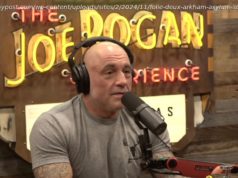September marks the peak of hurricane season. Storms like Florence raise the inevitable question: How can we kill these pesky hurricanes? As reckoned a…
September marks the peak of hurricane season. Storms like Florence raise the inevitable question: How can we kill these pesky hurricanes?
As reckoned a decade ago, major hurricanes cost the United States economy an average of about $12 billion annually. This cost increases because more people, who paid higher prices for more stuff, live on coastal real estate. The United States and Caribbean have had a run of bad luck since 2016. The “big one” can now cost more than $100 billion.
The notion of killing hurricanes is absolutely beguiling. From 1961 to 1983, the National Oceanic and Atmospheric Administration and the Environmental Science Services Administration, its predecessor in the Department of Commerce, led Project STORMFURY, which sought to do just that through cloud seeding.
The strategy changed over time, but in its final form sought to seed clouds around the eyewall to build a second eyewall, a ring of thunderstorms, that would starve the original eyewall for heat energy stored in water vapor. The result would be weaker winds but spread over a larger area.
It was tried eight times, with apparent 50 percent success. STORMFURY came to an end when NOAA scientists realized that unmodified hurricanes make eyewall replacement cycles naturally, and that thunderstorms over the ocean are not promising targets for cloud seeding. It is crucial to remember that STORMFURY was well-funded, mainstream science for its time.
More: I survived Hurricane Maria. As Florence hits, here’s what I wish I’d known.
As Hurricane Florence creeps in, Trump seeks stormy deregulation
Is Trump some semi-God who conjured extreme weather?
Here are some ideas (mostly not taken seriously) that have come forward since:
►“Nuke ‚em.” Hurricanes are bad enough without making them radioactive. It’s also true that a summer thunderstorm releases about as much energy as a nuke, but in a half hour instead of a few microseconds. It would take a lot of atom bombs and violate nonproliferation treaties.
►Spreading some oily substance over the sea to slow heat transfer would supposedly weaken hurricanes because they draw their energy from the warm tropical ocean. Difficulties arise because the slick would need to hang together in 100 mph winds and would require supertanker loads of greasy slime.
►Pumping cold water from the ocean depths would also work, but would take tens of thousands of pumps. Logistical difficulties would be overwhelming if they were to be deployed in rising winds and waves ahead of the storm. An alternative with wave-powered pumps, permanently arrayed over the tropical Atlantic to keep the surface too cold for hurricane formation, would entail even more pumps. A colder ocean would mean less day-to-day evaporation. Most of the rain that waters soybeans and maize in the U. S. heartland starts with evaporation from the Gulf of Mexico and tropical Atlantic.
People who propose these “amelioration” schemes underestimate the immense scale and cost. They also discount unanticipated, adverse changes in climate or weather. The schemes generally focus on reducing wind, but freshwater flooding from torrential hurricane rain and storm surge, the wind-driven rise of (generally) salt water, have proved equally destructive.
STORMFURY, if it had worked, would probably have caused higher surges. More accurate forecasts, wind and flood resistant construction, wiser land use and timely evacuation, prosaic though they may seem, serve humanity well.
Dr. Hugh Willoughby is a distinguished research professor in the Department of Earth and Environment at Florida International University, where he teaches meteorology. Until 2002, he was a research meteorologist at NOAA’s Hurricane Research Division, where he had worked since 1975 and acted as director 1995-2002.






